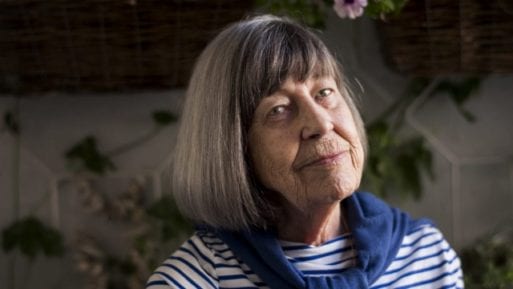
Having passed the age of 80, Margareta Magnusson decided to engage in döstädning, a Swedish word that translates as “death cleaning” — and to write about it in “The Gentle Art of Swedish Death Cleaning.” In Sweden, death cleaning involves removing unnecessary items from your household as death approaches, allowing one to distribute family heirlooms, shred unnecessary paperwork or find welcoming homes for beloved treasures. As Magnusson notes:
It is amazing, and also a little strange, how many things we accumulate in a lifetime.
“The Gentle Art of Swedish Death Cleaning” is a collection of bite-sized musings and words of advice written in the delightful tone of an engaged grandmother. The text is sprinkled with fun Swedish words such as fulskåp (a cabinet for ugly things) and mansdagis (a male kindergarten, or another word for “man cave”). Interweaving brief stories of family members and pets together with things she’s seen and read, Magnusson creates the sense that one is reading a series of letters or diary entries — minus the secrets, something Magnusson suggests keeping to oneself and disposing of discreetly.
This layout, along with simple, non-confrontational nature of her suggestions, makes Magnusson’s advice easy to digest — perhaps even for those highly adverse to letting go of long-held belongings.
“The Gentle Art of Swedish Death Cleaning” Is a How-To Guide

Author Margareta Magnusson
Credit: Alexander Mahmoud
Magnusson addresses planning a move to a smaller space, as well as what to do with specific items such as clothing, dishes and collections. Carefully crafted tips — starting with the attic, basement or storage cupboards; leaving the photographs, letters and personal papers for last; and focusing on one category at a time — gently guide the reader through the process. And for those who don’t feel up to the task on their own, there are companies that can help.
It is a delight to go through things and remember their worth. And if you don’t remember why a thing has meaning or why you kept it, it has no worth, and it will be easier for you to part with.
Death cleaning serves multiple purposes: It relieves children of the burden of going through their parents’ belongings. It prevents sibling rivalry (a possibility Magnusson averts by selling an heirloom bracelet rather than deciding which of her five children should receive it). And it simplifies one’s life, allowing greater enjoyment of what one has left. Magnusson, who found that “living smaller is a relief,” emphasizes that death cleaning is to be embraced for oneself as well as others. In fact, the more she’s undertaken, the braver she’s become:
I often ask myself, Will anyone I know be happier if I save this? If after a moment of reflection I can honestly answer no, then it goes into the hungry shredder, always waiting for paper to chew.
Upon finishing “The Gentle Art of Swedish Death Cleaning,” readers might be surprised to find themselves left with far fewer things than they had before. And if they’re not sure what to do with a newly finished paperback? Not to worry: Magnusson has ideas for that, too.
You can watch Magnusson discuss Swedish death cleaning in the video below.

 “The Gentle Art of Swedish Death Cleaning” by Margareta Magnusson
“The Gentle Art of Swedish Death Cleaning” by Margareta Magnusson


 First the Wealth Gap, Now the U.S. Has a Growing Health Gap
First the Wealth Gap, Now the U.S. Has a Growing Health Gap
 How to Comfort A Dying Loved One
How to Comfort A Dying Loved One
 Our Annual Seven Holiday Gifts for Someone Who Is Grieving, 2024 Edition
Our Annual Seven Holiday Gifts for Someone Who Is Grieving, 2024 Edition














